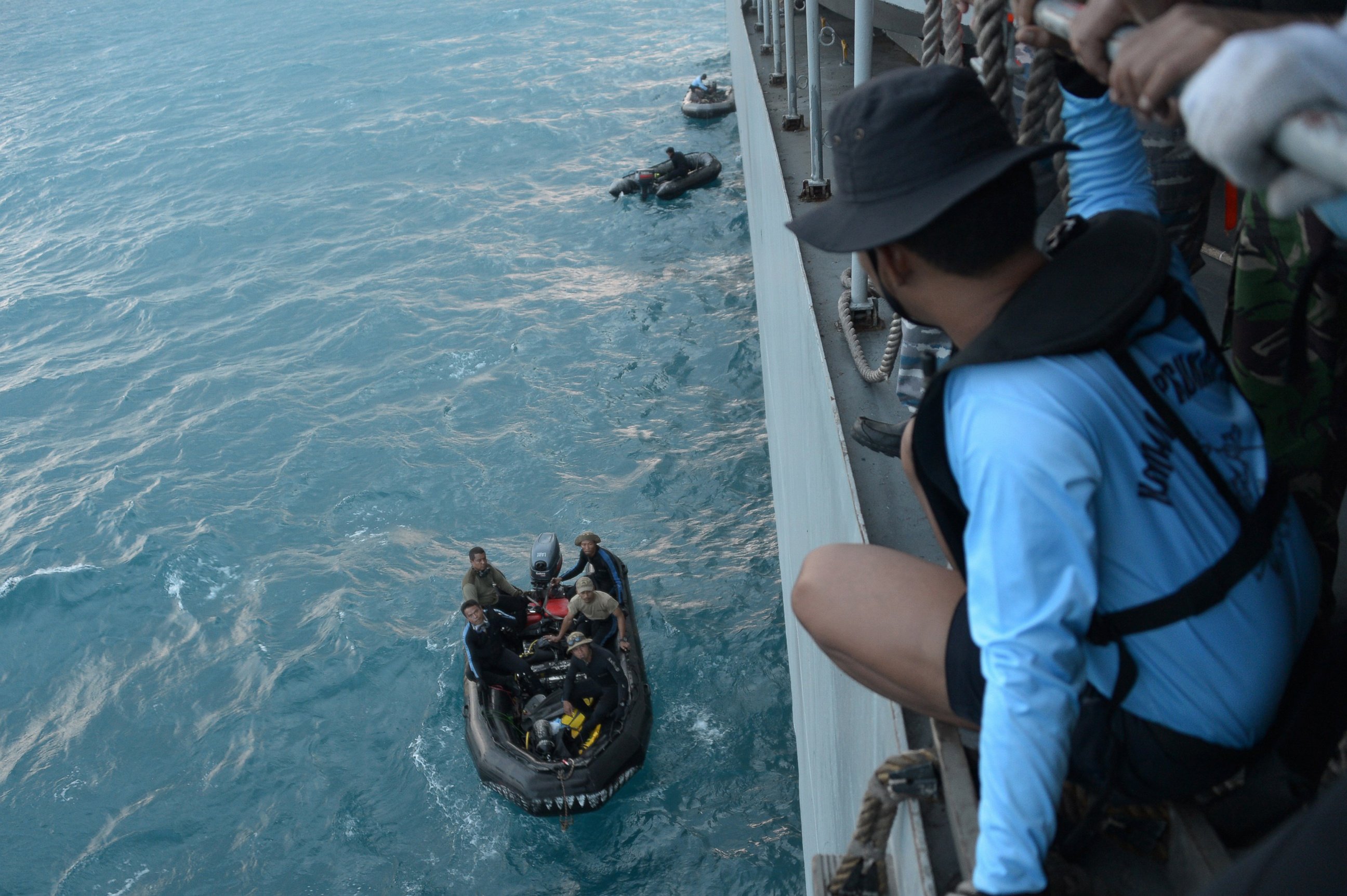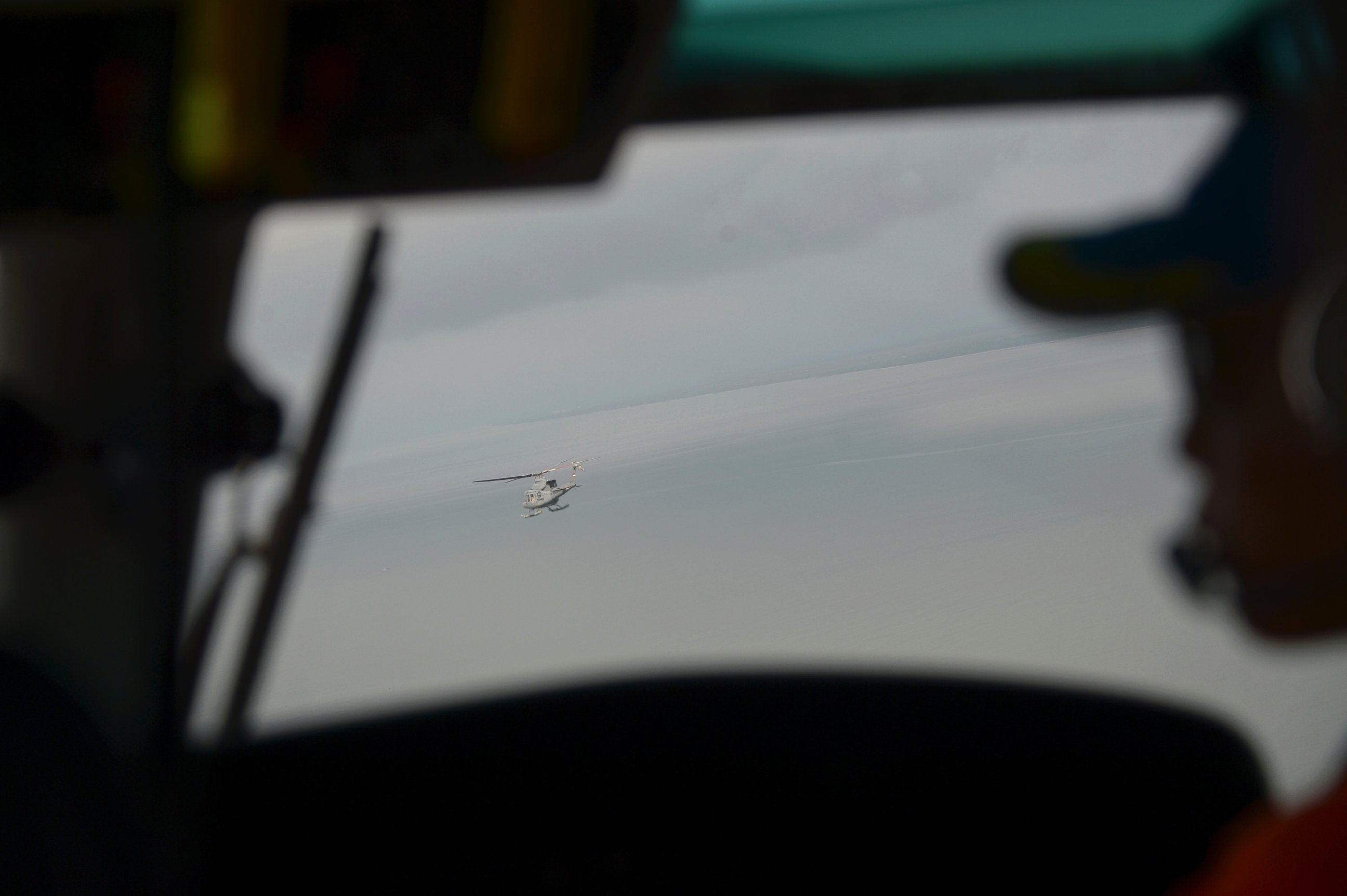Search Crews Working to Raise Tail of Crashed AirAsia Plane
Authorities hope to locate the plane's black boxes.
— -- Search crews are working today to raise the tail of the AirAsia plane that crashed into the Java Sea, with hopes of locating the plane’s black boxes.
A crane from Indonesia’s Crest Onyx ship is being used to raise the tail, Indonesia’s National Search and Rescue Agency stated in a presentation outlining the search efforts.
Marjono, the chief investigator with Indonesia’s National Transportation Safety Committee, told ABC News that there is no official confirmation that any sounds that might have been pings from the plane's black boxes have been detected thus far.
Rescue workers recovered four bodies today, bringing the total number to 48, authorities said. A dive team also worked to identify an underwater object, with side-scanning efforts also employed in the area.

The plane’s tail was spotted Wednesday, upside down and partially buried. The letters “A” and “X” were visible on the wreckage, along with the stylized dot in AsiaAir’s logo, matching the plane's tail.
The black boxes – which are located in the plane’s tail section – could offer essential information about the doomed flight, including recordings of cockpit voice and flight data.

AirAsia Flight 8501 was carrying 162 people when it crashed Dec. 28. The water at the crash site is shallow, but this is the worst time of the year for a recovery operation to take place due to seasonal rains that have created choppy seas and blinding mud and silt from river runoff.
The Associated Press contributed to this report.




